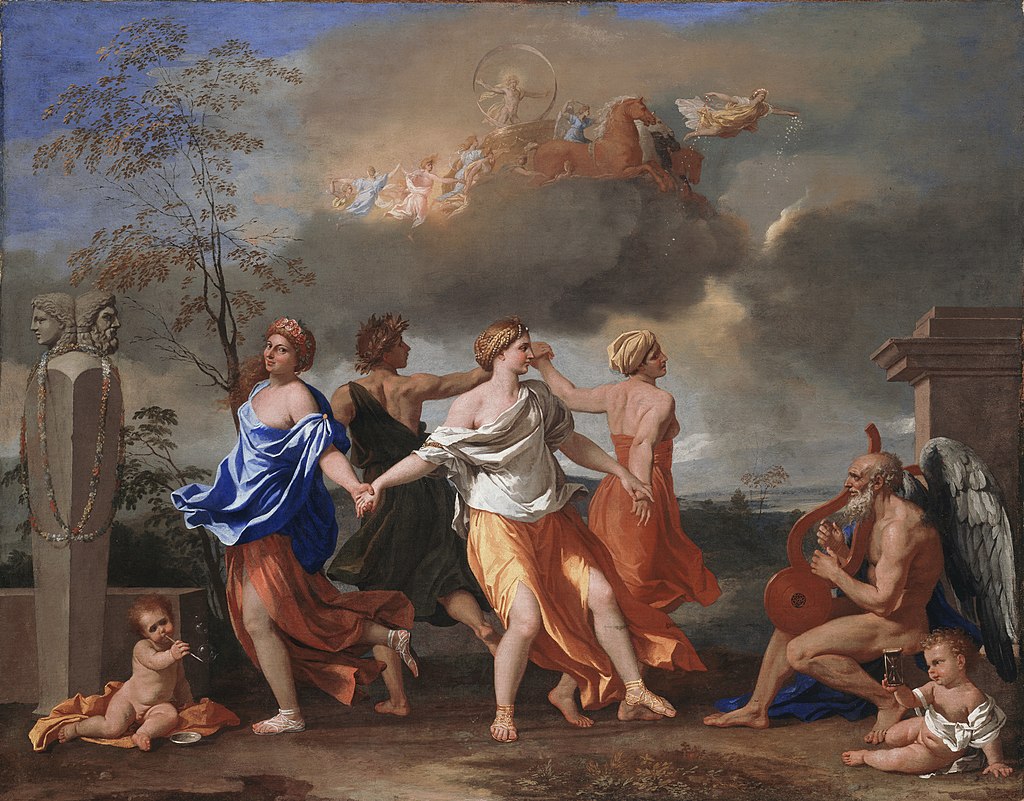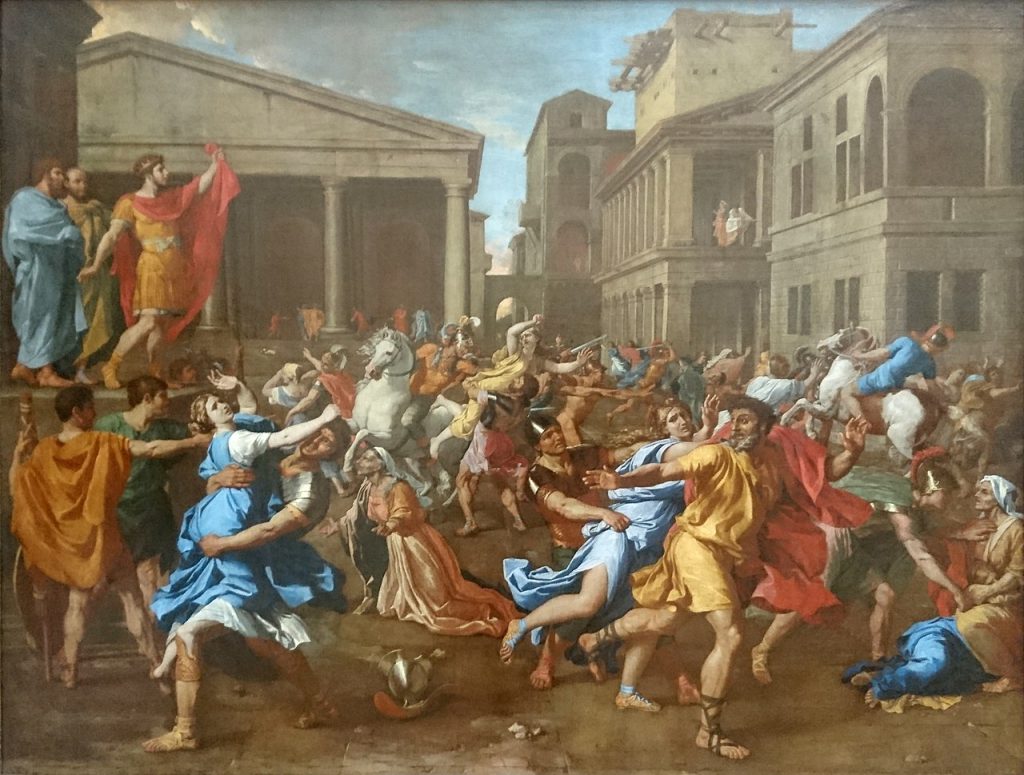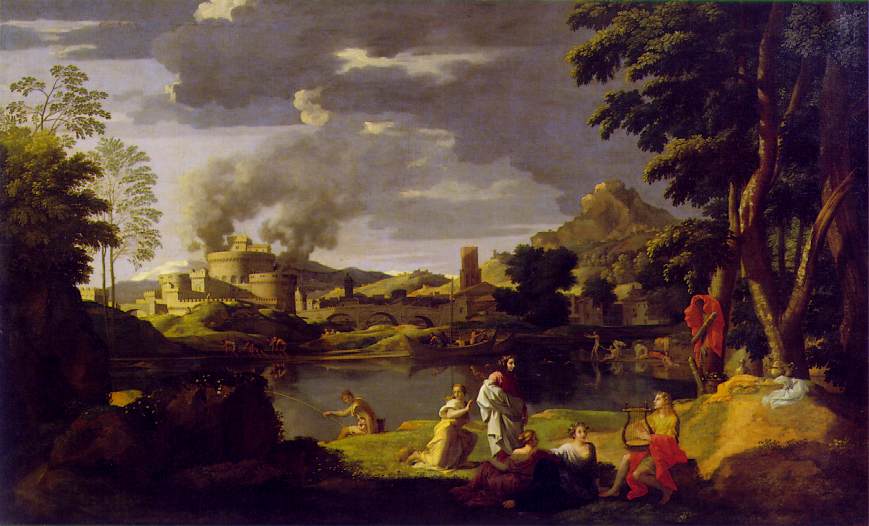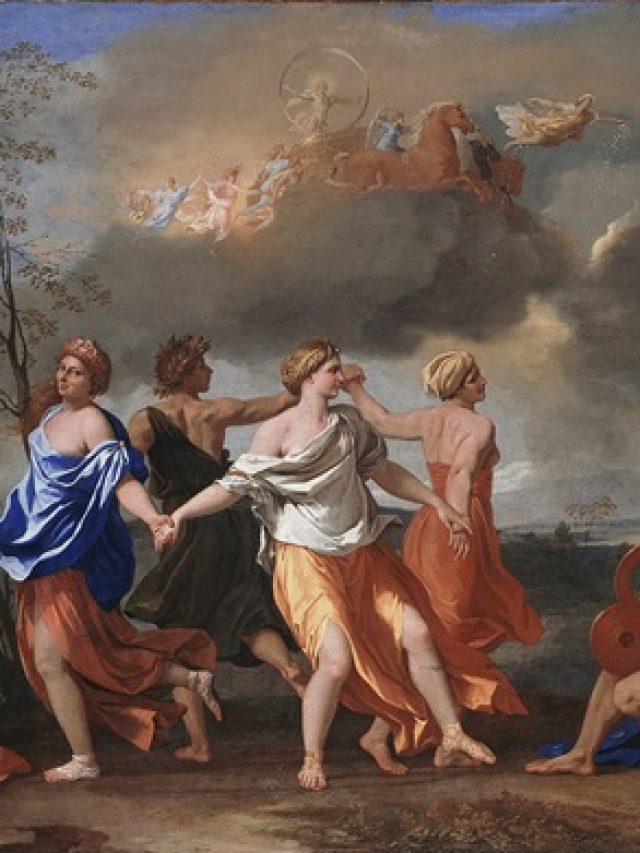French Baroque painter Nicholas Poussin, sometimes Nicolas Poussin, was born in Les Andelys, Normandy, on June 15, 1594. He was an influential player in the formation of European classical art and is frequently regarded as one of the best painters of the 17th century.
The classical clarity, composition, and intellectual rigour define Poussin’s art. The works of Italian Renaissance artists like Raphael and Titian and the classical art of ancient Greece and Rome profoundly affected him. Poussin was renowned for his meticulous planning and attention to detail, and his paintings frequently featured historical or mythological themes.
He worked most of his career in Rome, honing his unique aesthetic and becoming linked to the Classicism classical revival movement. His artwork incorporates historical events, biblical tales, and scenes from classical mythology. “The Rape of the Sabine Women,” “The Death of Sapphira,” and “The Arcadian Shepherds” are some of his well-known paintings.
Later painting generations were significantly impacted by Poussin’s work, especially those in France and England. His focus on intellectual content and classical ideas had a long-lasting effect on the advancement of Western art. Poussin passed away on November 19, 1665, in Rome.
Nicolas Poussin’s Most Famous Paintings
Nicholas Poussin produced a large corpus of work that included historical narratives, biblical subjects, and classical and mythological themes. One of the most important paintings portraying the fabled event in Roman history in which the men abducted Sabine women to fill their newly built city is The Rape of the Sabine Women (c. 1637–1638). The dynamic composition effectively conveys the turbulent incident through figures in motion.

Poussin’s “The Arcadian Shepherds,” or Et in Arcadia Ego (c. 1637–1638), is one of his works. The translation of the title, “Even in Arcadia, I am present,” alludes to death’s inevitable conclusion. Shepherds are shown in the painting, reflecting on a tomb with an inscription.
This biblical scene from ‘The Death of Sapphira’ (c. 1650) tells the story of Ananias and Sapphira from the Book of Acts. God punished the pair for lying to the apostles about the money they made from selling their property. The instant of Sapphira’s unexpected passing is shown in the picture.
Poussin depicts the Greek deity Pan and other legendary characters participating in a spirited party in The Triumph of Pan, which dates to circa 1636. Poussin’s command of classical motifs and ability to systematically express movement and emotion are evident in this piece. Poussin’s 1633–1634 work, The Adoration of the Golden Calf, interprets the biblical narrative in the Book of Exodus, in which the Israelites, lacking Moses, worship a golden calf. The confusion and idolatry of the time are depicted in the picture.
Poussin’s landscape paintings were equally well-known. The artist emphasises the harmony of nature and spirituality in Landscape with Saint John on Patmos (c. 1640), which mixes a serene landscape with a portrait of the biblical character Saint John on the island of Patmos.
Poussin’s paintings representing the Catholic Church’s sacraments include the Sacrament of Ordination (c. 1636–1640-). Poussin captures the solemnity and formality of ordaining a priest in this picture, which illustrates the sacrament of ordination. Poussin’s mastery of classical composition, meticulous attention to detail, and capacity to infuse intellectual depth into his works are all on display in these paintings. His work is still studied and appreciated for its impact on the evolution of classical painting.
The Abduction of the Sabine Women
The passages Poussin made after researching Roman antiquity are embodied in this picture. Figural ensembles prompt the choreography of dancers captured in mid-action on stage or in a time and space; others are based closely on archaic statues. Poussin is a clever colourist, as shown by the complex interplay of draperies woven amongst the figures.

Poussin created these paintings’ intricate formal harmony and spatial relationships by placing wax figures in a small, theatre-like box. The violent issue originates from a founding narrative of Rome, wherein the Romans forcefully captured the women of the neighbouring Sabines and took them as husbands by inviting them to a feast. When the Roman leader Romulus raised his cloak—seen here at left—his warriors seized them.
The event in Roman folklore known as the Rape of the Sabine Women, often guided to as the Abduction of the Sabine Women or the Kidnapping of the Sabine Women, was a large-scale kidnapping of young women from neighbouring residents by men from Rome. It has repeatedly been the subject of artwork by sculptors and painters, mainly in the Renaissance and post-Renaissance periods.
Poetry and allegory
Poussin’s paintings’ most highly praised features are their classical transparency and clarity, technical proficiency, and sense of compositional balance. It’s as if the paintings’ limpid light and classical symmetry implied an equally lucid message. He regularly cited romantic and heroic literature from his day, besides classical and myth. Usually, subjects are decided upon in advance with his clients.

Another Rospigliosi composition was the basis for one of his most well-known compositions, A Dance to the Music of Time. The four figures in the dance embody the stages of life, according to his early biographers Bellori and Felibien: poverty leads to work, work to riches, and riches to luxury; subsequently, by Christian belief, luxury leads back to poverty, and the cycle repeats.
Instead of showing his subjects as objects, Poussin’s paintings physically represent their expressions. The humanistic ideas, principles, and convictions that Poussin adopted into his life are reflected in his paintings.
Through transcendent representations of the human body that bridge the gap between historical tales and contemporary mythologies, Poussin’s paintings create a portal to the otherness of former eras. Reexamining Poussin’s oeuvre injects historical research and the voice of far-off places and people into contemporary aesthetics and the arts discourse.

Krispin Joseph PX, a poet and journalist, completed an MFA in art history and visual studies at the University of Hyderabad.






